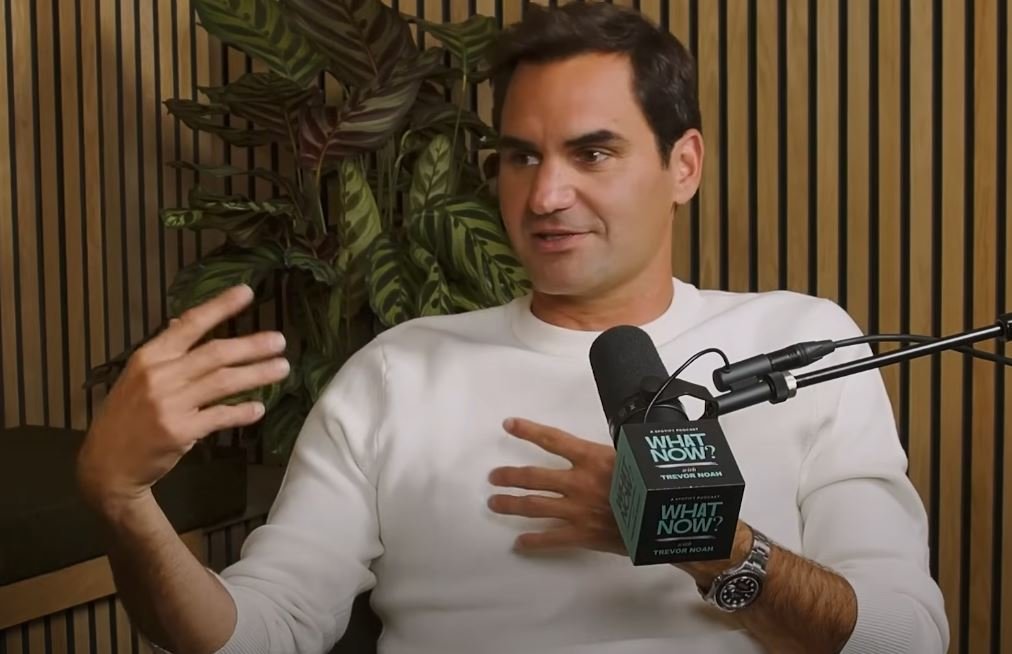
Roger Federer’s presence has a subtly commanding quality. He is 1.85 meters (6 feet 1 inch) tall, so unlike some of his more diminutive competitors, he does not tower like a basketball player or back down from visual dominance. His height strikes a pleasing midpoint, which is especially advantageous for his tennis game. His physique served as the physical model for a contemporary tennis champion because it was neither too lanky to impair agility nor too compact to lessen leverage.
Because of his height, Federer was able to develop a balancing style of play. He moved with poetic efficiency, absorbing pace with grace rather than bare aggression, gliding rather than running. In contrast to tall servers like John Isner, whose games focused on smashing aces, Federer’s 6’1″ frame permitted a more subtle strategy. His serves were placed with surgical precision instead of force, and they were surprisingly sharp. His height allowed him the footspeed he needed to chase down impossible drop shots while also providing him with just enough reach to dominate at net and deliver overheads with authority.
| Attribute | Detail |
|---|---|
| Full Name | Roger Federer |
| Date of Birth | August 8, 1981 |
| Birthplace | Basel, Switzerland |
| Nationalities | Swiss, South African |
| Height | 1.85 m (6 ft 1 in) |
| Weight | 85 kg (187 lbs) |
| Turned Professional | 1998 |
| Retired | September 23, 2022 |
| Grand Slam Titles | 20 |
| Singles Titles | 103 |
| Olympic Medals | Gold (2008 Doubles), Silver (2012 Singles) |
| Official Website | www.rogerfederer.com |
| Foundation | Roger Federer Foundation |
There has been a discernible shift toward taller players in professional tennis in recent decades. A change in physical expectations is indicated by athletes like Alexander Zverev, who is also 1.98 meters tall, and Daniil Medvedev, who is 1.98 meters tall. Federer, who is remarkably similar in height to both Rafael Nadal and Novak Djokovic (1.85 and 1.88 meters, respectively), is still the gold standard, though. This range isn’t random; it’s been linked to the sport’s most adaptable, durable, and technically sound players time and time again.
Federer’s medium height allowed him to exert kinetic force without going overboard. He was commended for his fluid service motion, which was incredibly efficient at preserving energy during extended games. His height improved his coverage of the court, especially on hard and grass courts where bounce control is important. He converted this advantage into eight Wimbledon titles, each serving as a reminder that height can be an asset rather than a barrier when combined with style.
Federer’s gracefully erect and constantly strong silhouette has come to represent tennis greatness over the last 20 years. He was more than just a legend to younger players—he was the model. The court was not dominated by his height. It blended in with it. He distinguished himself from the tall men who depended on first-serve dominance with that nuance. Rather, Federer used geometry—angles, placement, and intuition—to create art from a frame that many now consider to be optimal for biomechanics.
Furthermore, Federer’s height made him a visually relatable figure in the context of performance psychology. He inspired with psychological serenity rather than intimidating with physical size. Federer’s playstyle seemed to breathe, in contrast to taller athletes who frequently seem more mechanical in their movements. His steadiness, accuracy, and composure became a metaphor for his character. His 6’1″ frame wasn’t a showpiece; rather, it was a vessel that was both aesthetically pleasing and effortlessly efficient.
Federer was able to expand his reputation well beyond the court by using strategic branding. His poise and height made him an ideal spokesperson for high-end companies like Uniqlo and Rolex. His size was never overbearing but always dignified, and he seemed equally at ease at Grand Slam finals and charity galas. That adaptability was crucial in establishing Federer as a cultural icon as well as a sportsman, with a body that subtly suited each role.
Federer’s absence was felt deeply during the pandemic, when tennis paused and his appearances became infrequent, not only because of his strokes but also because of the aesthetic he embodied. With each passing shot, the head is high above the net, the posture is poised, and the movements are elegant. No longer a statistic, his height became a part of his story. Federer felt whole in part because of it.
His legacy has become even clearer since he retired in 2022. Federer now serves as a model for the most comprehensive player, not the tallest or strongest. Because of his height, he was able to play freely, learn variety, and outlast rivals who depended too much on strength. In addition to being a player of his time, he quietly changed how coaches scouted, how athletes trained, and how equipment was made to support fluid movement rather than brute force.
Federer demonstrated that explosive power and towering serves were not the only characteristics of a successful tennis career by incorporating balance into his game. Harmony of body, mind, and motion could shape it. His 6’1″ frame allowed him to play a variety of styles of tennis, from graceful serve-and-volley sequences to punishing baseline rallies. Few could easily match that range. Perhaps Federer’s real height advantage—not measured in inches but rather in the dimension he added to the game—lies there.
The argument over the “ideal tennis body” will likely continue in the years to come, particularly as younger players introduce new athletic dynamics. Federer’s height will still be used as a benchmark, though. A generation of players has already learned from it that greatness can be attained without being a physical anomaly. All you have to do is line up every inch with purpose.
